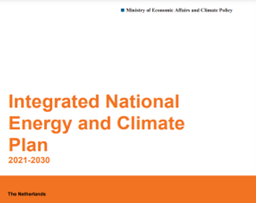Housing retrofit subsidies in the Netherlands
Created on 30-09-2024 | Updated on 20-11-2024
The Dutch government incentivises energy-efficient housing retrofit through subsidies, grants, and loans. However, the Netherlands also implements a regressive carbon tax, impacting lower incomes due to the inelasticity of energy consumption. The EU’s Retrofit Wave promotes this approach, proposing to include buildings in the Emissions Trading Scheme. The Dutch fiscal system favours owner-occupation, with large income tax deductions for mortgages. This, combined with generous retrofit subsidies, increases the fiscal burden on energy consumption impinging on affordability. Alternatively a green tax could incentivise retrofit more progressively.The Dutch government incentivises energy-efficient housing retrofit through subsidies, grants, and loans. However, the Netherlands also implements a regressive carbon tax, impacting lower incomes due to the inelasticity of energy consumption. The EU’s Retrofit Wave promotes this approach, proposing to include buildings in the Emissions Trading Scheme. The Dutch fiscal system favours owner-occupation, with large income tax deductions for mortgages. This, combined with generous retrofit subsidies, increases the fiscal burden on energy consumption impinging on affordability. Alternatively a green tax could incentivise retrofit more progressively.
Instrument
Fiscal Policy
Issued (year)
-
Application period (years)
-
Scope
Country
Target group
Homeowners
Housing tenure
Owner
Discipline
economics-sociology-finance
Object of study
Instrument Outcomes
Description
In Europe, the push for energy-efficient housing has led to widespread use of financial incentives such as grants, loans, and tax rebates to encourage homeowners to undertake retrofits. These measures aim to reduce energy consumption and improve the environmental performance of residential buildings. Governments across the continent have adopted various programs to support these efforts, offering significant financial aid to make energy-saving improvements more accessible to homeowners. In addition to subsidies, some countries implement energy taxes to further promote efficiency and fund sustainability initiatives. At the European Union level, comprehensive strategies are being developed to enhance the energy efficiency of buildings, including proposals for new regulatory frameworks and financial incentives. This multi-faceted approach reflects a growing recognition of the importance of sustainable housing in achieving broader environmental and economic goals.
Subsidisation of housing retrofit, through grants and loans, as well as tax rebates are commonly used across Europe to incentivise the energy-efficient retrofit of the housing stock (Castellazzi et al., 2019). Following this trend, the Dutch government has put in place a series of grants and subsidised loans to incentivise retrofit. First, the “Subsidie Energiebesparing Eigen Huis” is a grant programme covering up to 50% of retrofit costs when at least two energy-saving measures improving EPC levels have been implemented. Dutch homeowners can also apply for the Investment Grant for Sustainable Energy Savings (ISDE) in the case of single measures such as solar boilers or heat pumps (Ministry of Economic Affairs and Climate Policy, 2019). Since 2022, 0% interest loans are also available to low-income households from the National Heat Fund.
On the stick side of retrofit incentivation, the Netherlands implements a regressive form of carbon taxation on individual households (Maier & Ricci, 2024). Research by the Dutch National Bank has also alluded to the strong impact of energy taxation on lower incomes and the inelasticity of energy consumption. Havlinova et al. (2022) have found that the introduction of stronger forms of energy taxation in heated energy markets can impinge on lower incomes resulting in regressive distributional impacts. At the EU level, the Renovation Wave is actively promoting this approach to housing retrofit through its proposal to include buildings in the Emissions Trading Scheme (ETS) together with the implementation of retrofit subsidies(2003/87/EC). As a result, while owner-occupied housing is undertaxed, the tax burden on energy consumption at the household level is poised to increase.
Retrofit subsidies usually come to join fiscal systems favouring owner occupation. These forms of direct subsidisation of housing retrofit coalesce with increases in the fiscal burden on energy consumption. According to Haffner & Heylen (2011), the housing taxation structure favours owner-occupation with a mortgage through large deductions in income tax. In the Netherlands, imputed rent, the main form of housing taxation is calculated on the basis of a notional rent value and then added onto box 1 which comprises labour income. All other income from investments is taxed under box 3 at a different rate. Haffner & Heylen (2011) have analysed the lack of tax neutrality in this system and propose to include the taxation of housing assets under box 3 as a tax-neutral benchmark. In the context of housing retrofit, the favourable fiscal treatment of homeownership comes to join generous subsidies for owner-occupied housing retrofit with no maximum income threshold offered by the Dutch government. A green tax is a viable alternative to incentivise retrofit in a more progressive manner.
The Dutch approach to incentivising housing retrofits exemplifies a broader European commitment to enhancing energy efficiency through a combination of financial incentives and regulatory measures. While generous subsidies and tax incentives significantly benefit homeowners, particularly those with mortgages, the regressive nature of energy taxation presents challenges for lower-income households.
Research indicates that increased energy taxation disproportionately impacts these households, underscoring the need for more progressive solutions. The EU’s Retrofit Wave, along with the proposed inclusion of buildings in the ETS, reflects an ongoing effort to balance these measures. In the context of housing retrofits, a shift towards green taxes could provide a more equitable framework, ensuring that the financial burden and benefits of energy-efficient improvements are more evenly distributed across different income groups.
(This text is an excerpt from : Fernández, A., Haffner, M. & Elsinga, M. Subsidies or green taxes? Evaluating the distributional effects of housing renovation policies among Dutch households. J Hous and the Built Environ (2024). https://doi.org/10.1007/s10901-024-10118-5 )
Alignment with project research areas
The Dutch government’s approach to incentivizing energy-efficient retrofits through subsidies, grants, and low-interest loans is a clear example of policy in action. The implementation of a regressive carbon tax and the proposed green tax also demonstrate how policy can be used to drive sustainable practices and behaviours. These policies align with RE-DWELL’s focus on developing and implementing effective policies for affordable and sustainable housing.
The energy-efficient retrofits encouraged by the Dutch government’s subsidies and grants involve the design of sustainable housing solutions. These retrofits may include the installation of solar boilers and heat pumps, which contribute to the design of homes that are more energy-efficient and environmentally friendly. This aligns with RE-DWELL’s emphasis on sustainable design in the housing sector.
The Dutch housing policies require active participation from homeowners, who must apply for grants and loans, and undertake energy-saving measures in their homes. This highlights the importance of public participation in achieving sustainability goals, a key aspect of the RE-DWELL project. However, the potential impact of these policies on lower-income households underscores the need for inclusive participation, ensuring that all segments of society can benefit from sustainable housing initiatives.
Alignment with SDGs
The Dutch housing retrofit subsidies and taxation policies align with several Sustainable Development Goals (SDGs). Firstly, they contribute to SDG 7, Affordable and Clean Energy, by promoting energy-efficient retrofits and the use of sustainable energy sources like solar boilers and heat pumps. Secondly, the regressive carbon tax and the proposed green tax relate to SDG 13, Climate Action, as they aim to reduce greenhouse gas emissions.
However, the impact of these policies on lower-income households raises concerns about SDG 10, Reduced Inequalities. The regressive nature of the carbon tax and the potential for retrofit subsidies to favour homeowners may exacerbate income disparities. Thus, achieving a balance between environmental sustainability and social equity is crucial.
References
Castellazzi, L., Zangheri, P., Paci, D., Economidou, M., Labanca, N., Ribeiro, S., Panev, V., Zancanella, P., & Broc, J. S. (2019). Assessment of second long-term retrofit strategies under the Energy Efficiency Directive. Joint Research Centre. https://doi.org/10.2760/973672
Haffner, M., & Heylen, K. (2011). User Costs and Housing Expenses. Towards a more Comprehensive Approach to Affordability. Housing Studies, 26(04), 593–614. https://doi-org.tudelft.idm.oclc.org/10.1080/02673037.2011.559754
Havlinova, J., van Voss, B. H., Zhang, L., van der Molen, R., & Caloia, F. (2022). Financiering voor de verduurzaming van de woningvo. De Nederslandsche Bank.
Maier, S., & Ricci, M. (2024). The Redistributive Impact of Consumption Taxation in the EU: Lessons from the post-financial crisis decade. Economic Analysis and Policy 81, 738-735. https://doi.org/10.1016/j.eap.2023.12.012
Ministry of Economic Affairs, Policy and Climate (2019). Integrated National Energy and Climate Plan.
Related vocabulary
Affordability
Financial Wellbeing
Green Land Value Tax
Housing Policy
Housing Retrofit
Viability
Area: Design, planning and building
Created on 03-06-2022
Read more ->Area: Policy and financing
Created on 21-04-2023
Read more ->Area: Design, planning and building
Created on 14-10-2024
Read more ->Area: Design, planning and building
Created on 14-10-2024
Read more ->Area: Policy and financing
Created on 17-03-2022
Read more ->Area: Design, planning and building
Created on 16-02-2022
Read more ->Area: Design, planning and building
Created on 14-10-2024
Read more ->



